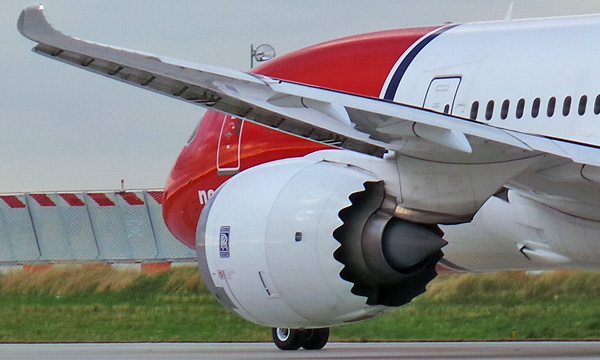The increase in engine inspections is weighing on operations |
| Romain Guillot |
|
|
18 SEP 2019 | 356 words
|
 |
© Le Journal de l'Aviation - All rights reserved |
|
|
|
Rolls-Royce's Trent 1000 is continuing to generate a buzz, as the British engine manufacturer continues to work on the premature ageing problems affecting its Package B and Package C engines.
Just a few days after the publication of its six-monthly results at the start of August and as the engine manufacturer was announcing that it had made significant progress in solving the Trent 1000 problems, a Norwegian aircraft suffered a broken turbine blade just a few seconds after taking off from Fiumicino, an incident which should lead to modifications of inspection criteria and replacement of the turbine blades schedule.
In the meantime, several airlines are still having to cope with the grounding of part of their 787 fleet, such as Norwegian, Air New Zealand, Virgin Atlantic, ANA, Latam or LOT.
France hasn't been spared by the Trent 1000's issues and it's not rare to see a Portuguese Hi Fly Airbus A380 next to a Norwegian Dreamliner with their engine cowlings open next to Terminal 1 at Roissy CDG, as the low-cost airline is using more and more wet-lease services to continue to provide its flights between Europe and the United States.
Air Austral has also seen its flight programme turned up at the start of the summer following a new grounding of one of its 787s because of a lack of spare engines, an aircraft which has still not been brought back into service as we write.
But engine inspections have been extended to other types of plane over the last few weeks, as the FAA has instigated new airworthiness instructions for inspections on GP7200s (A380). These inspections, which complement the measures which had been put in place after the accident on the Air France aircraft over Greenland in 2017, cover the French airline's aircraft, and also aircraft belonging to Etihad, Korean Air, Qatar Airways and many belonging to Emirates.
Finally, the latest airworthiness instruction to date relates to the PW1500Gs (A220) and PW1900Gs (E2) and was published on 9th September to resolve potential oil leaks which caused at least two shutdowns during flight last year (AirBaltic and Swiss).
|
|
 |
Romain Guillot
Chief editor
Cofounder of Journal de l'Aviation and Alertavia
|
|
| |
They made this section possible |
|
|
|
|
|
|
|
|
|
|
|
|
|
|
|
|
Top stories |
|
|
|
|
|
Top stories
|